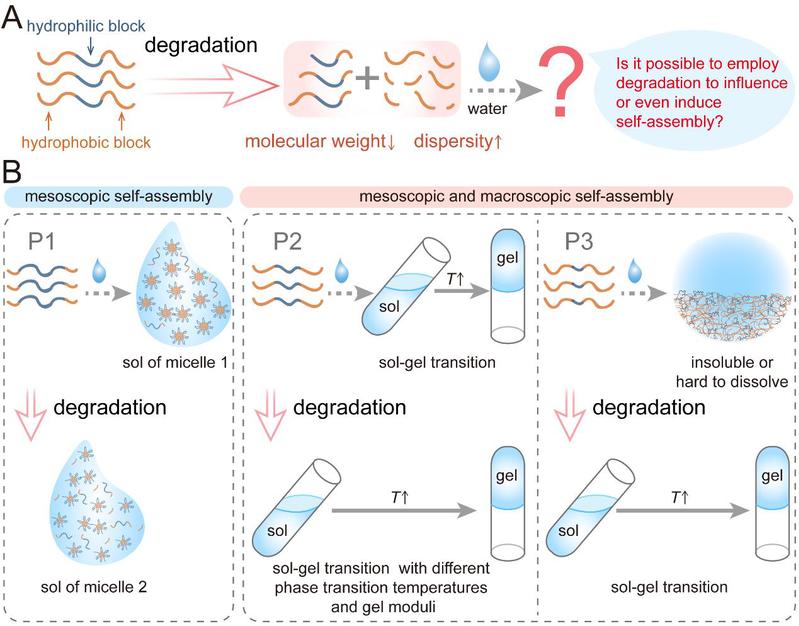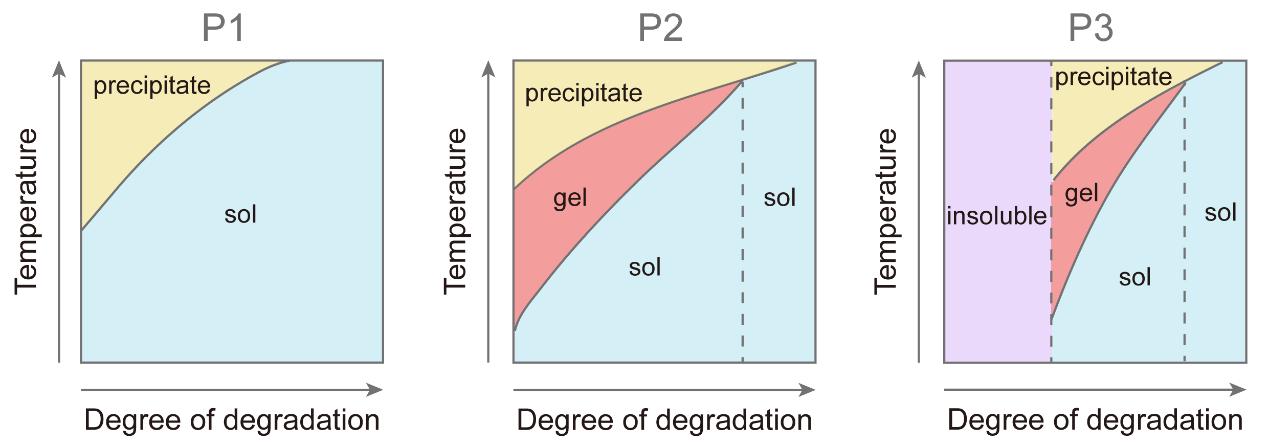 +565 975 658
+565 975 658
 info@premiumcoding.com
info@premiumcoding.com
 Monday - Friday, 8.00 - 20.00
Monday - Friday, 8.00 - 20.00
Polyester-polyether block copolymers with appropriate molecular parameters can undergo a sol-gel transition in water with increasing temperature. If the sol-gel transition takes place between room temperature and body temperature, it can be used to generate a thermogel in biomedical and other fields. Based on previous reports, the properties of the polymeric system can be adjusted by molecular weight, molecular weight distribution, block ratio, etc.
Biodegradability arising from hydrolysis of ester bonds is an important character of a polyester-polyether copolymer thermogel. The research on the degradation of the corresponding material so far mainly focuses on the morphological changes, degradation period and molecular weight changes. In contrast, understanding of the internal structure changes of materials during degradation is insufficient, which limits the clinical translation of the polyester-polyether copolymer thermogel. In light of Macromolecular Science and Polymer Engineering, it is much meaningful to explore the hierarchical self-assembly of amphiphilic block copolymers in solvent and its change with degradation.
To this end, Jiandong Ding’s research group at Fudan University developed dynamic Monte Carlo simulation method available for monitoring the degradation-relevant multiscale structure evolution. Then the effect of degradation on the hierarchal self-assembly behavior of three polyester-polyether copolymer aqueous systems with different amphiphilic properties were examined both in experiments and simulations. Inspired by the concept of “polymerization-induced self-assembly (PISA)”, the term “degradation-influenced/induced self-assembly (DISA)” is proposed to describe the corresponding behaviors in this study.
Three typical DISA types have eventually been revealed as presented in Figure 1: (1) “sol of micelle 1” to “sol of micelle 2”; (2) “sol-gel 1” to “sol-gel 2”; (3) “precipitate” to “sol-gel-precipitate”, as schematically shown in Figure 1. The default copolymer aqueous systems are named P1, P2, and P3 for convenience, which global hydrophobicity gradually increases.

Figure 1. (A) Schematic illustration of the idea of “degradation-influenced/induced self-assembly (DISA)”; (B) Three typical DISA types: (1) “sol of micelle 1” to “sol of micelle 2”; (2) “sol-gel 1” to “sol-gel 2”; (3) “precipitate” to “sol-gel-precipitate”.
For P1 system, only sol-precipitate transition could occur before and after degradation due to its strong hydrophilicity. Nevertheless, degradation has changed the micellar self-assembly structure and micellization ability of the system, leading to self-assembly at the mesoscopic level.
The P2 system with moderate amphiphilicity could exhibit sol-gel transition with increasing temperature. After degradation, the gelation temperature (Tgel) of the system increased, the thermogelation window became narrower, and the modulus of the system gradually decreased. In addition to these macroscopic changes, the aggregation capacity and self-assembly structure of the corresponding micelles had changed significantly at the mesoscopic level after degradation.
P3 copolymer was hard to dissolve in water due to its strong hydrophobicity. After a certain degree of degradation, the P3 copolymer system has transformed into a polydisperse system with moderate molecular weight (MW) and molar mass dispersity. As a consequence, the combinatory effects of MW and dispersity enabled the enhancement of solubility and the formation of micelles through self-assembly. The synergism among chains with different lengths resulted in a percolated network of semi-bald micelles, triggering a sol-gel transition at the macroscopic level.
Based on the simulation outputs and experimental results, temperature T and the degree of degradation R are suggested to describe DISA. The corresponding T-R phase diagrams of the three different DISA types (Figure 2) are helpful for guidance of molecular engineering of the polyester-polyether copolymer thermogel. Faced with tremendous prospects of degradable polymers, the suggestion proposed in this work that degradation provides for an additional degree of freedom for the control of material properties may have certain reference significance for other amphiphilic copolymer systems containing degradable blocks.

Figure 2. Corresponding T-R phase diagrams of the three typical DISA types.
In previous studies, degradation has been studied extensively as a “destroy” factor of a material for many years. In addition, this study demonstrates that degradation could be treated as a “construction” factor to influence a material in a dynamic manner. As shown in the results, degradation of polyester-polyether copolymer in water could influence both the mesoscopic micellar behavior and the macroscopic condensed state behavior under the combinatory effects of molecular weight and dispersity, so as to realize the regulation and redesign of the material properties.
This study has been published in Macromolecules with a Master candidate Ms. Yiman WEI as the first author, and her supervisor Prof. Jiandong DING as the corresponding author. See please: Yiman Wei, Shuquan Cui, Lin Yu, Jiandong Ding*, Degradation-Influenced/Induced Self-Assembly of Copolymers with the Combinatory Effects of Changed Molecular Weight and Dispersity, Macromolecules, 56, 2619-2636 (2023).
Article link: https://doi.org/10.1021/acs.macromol.2c02309
Get to know us better now!

Wechat:FDUMMers
Search!
Search across our website
Revenant @ 2018 by fudan | All Rights Reserved
Powered by Weicheng

